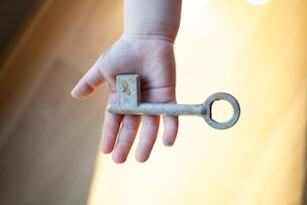ArtReview sent a questionnaire to artists and curators exhibiting in and curating the various national pavilions of the 2015 Venice Biennale, the responses to which will are being published daily in the lead-up to the Venice Biennale opening.
Chiharu Shiota is representing Japan. The pavilion is in the Giardini.
What can you tell us about your exhibition plans for Venice?
It is a great honour for me to be given the opportunity to participate in the world’s oldest exhibition along with the curator Nakano Hitoshi, who organised a solo exhibition of my work in Kanagawa in 2007. I will present a new installation titled The Key in the Hand, consisting of two boats, red yarn, and a huge number of keys.
Keys are familiar and very valuable things that protect important people and spaces in our lives. They also inspire us to open the door to unknown worlds. With these thoughts in mind, I would like to use keys provided by the general public that are imbued with various recollections and memories that have accumulated over a long period of daily use. As I create the work in the space, the memories of everyone who provides me with their keys will overlap with my own memories for the first time. These overlapping memories will in turn combine with those of the people from all over the world who come to see the biennale, giving them a chance to communicate in a new way and better understand each other’s feelings.
Are you approaching this show in a different way as to how you would a ‘normal’ exhibition?
The difference here lies less in the space itself (Venice, The Japan Pavilion) or its previous exhibitions than in the fact that I am representing Japan. Representing my country is different from what I am used to doing. To me, art has always been more important than identity.
What does it mean to ‘represent’ your country? Do you find it an honour or problematic?
I had never worked as a Japanese artist marked by my nationality. When I started to think about what I could do as a Japanese artist, I struggled – because I was asking myself, as someone living abroad from Japan, how I could best represent my country. Struggle is essential for creating art to me. But now I am more aware of being myself independently from my own culture and only reflecting on my work as an artist.
How are you approaching the different audiences who come to Venice – the masses of artist peers, gallerists, curators and critics concentrated around the opening and the general public who come through over the following months?
Presenting my work in the Venice Biennale was one of my dreams. I am very excited about the opening but I prefer not to think about who is coming or who I should address my work to because my doing so will only bring obstacles to my work itself. I would rather focus on my artwork.
What are your earliest or best memories of the biennale?
My earliest memories are from 1990. Saburo Muraoka, my art school teacher was representing the Japan Pavilion at that time. I was studying painting so visiting the Biennale made me think in a wider scale of possibilities.
My best memory is from 2001. Harald Szeemann was an amazing curator that year and I have never seen anyone like him when it comes to art. He was very sensitive and encouraging and did always his best for artists. He realised the difficult situation Chinese Artists were in at that time and supported them intensively: he introduced many Chinese artists to Venice and did the first step to realise a Chinese Pavilion.
You’ll no doubt be very busy, but what else are you looking forward to seeing?
I know several artists from past exhibitions that will also exhibit in the Biennale, so I am looking forward to seeing their work and meeting them once more. I am especially looking forward to discovering the French Pavilion by Céleste Boursier-Mougenot, with whom I have exhibited both in 2009 (Moscow Biennale for Co. Art) and 2010 (Casa Encendida, Madrid). Also for Germany, Olaf Nicolai, with whom I have exhibited at the Sevilla Biennial in 2004.
How does having a pavilion in Venice affect the art scene in your home country?
Over the years, all Japanese artists that have shown their work at the Japan Pavilion were currently living in Japan, so I believe there is a slight change this time, since I have been living in Germany for 17 years. I guess we are becoming more and more international. Perhaps that is how it could affect my homeland. There is a wider and open perspective for art nowadays.
Read all responses to the Venice Questionnaire 2015 edition published so far.
Read all 30 responses to the Venice Questionnaire 2013 edition.
Online exclusive published on 15 April 2015.
